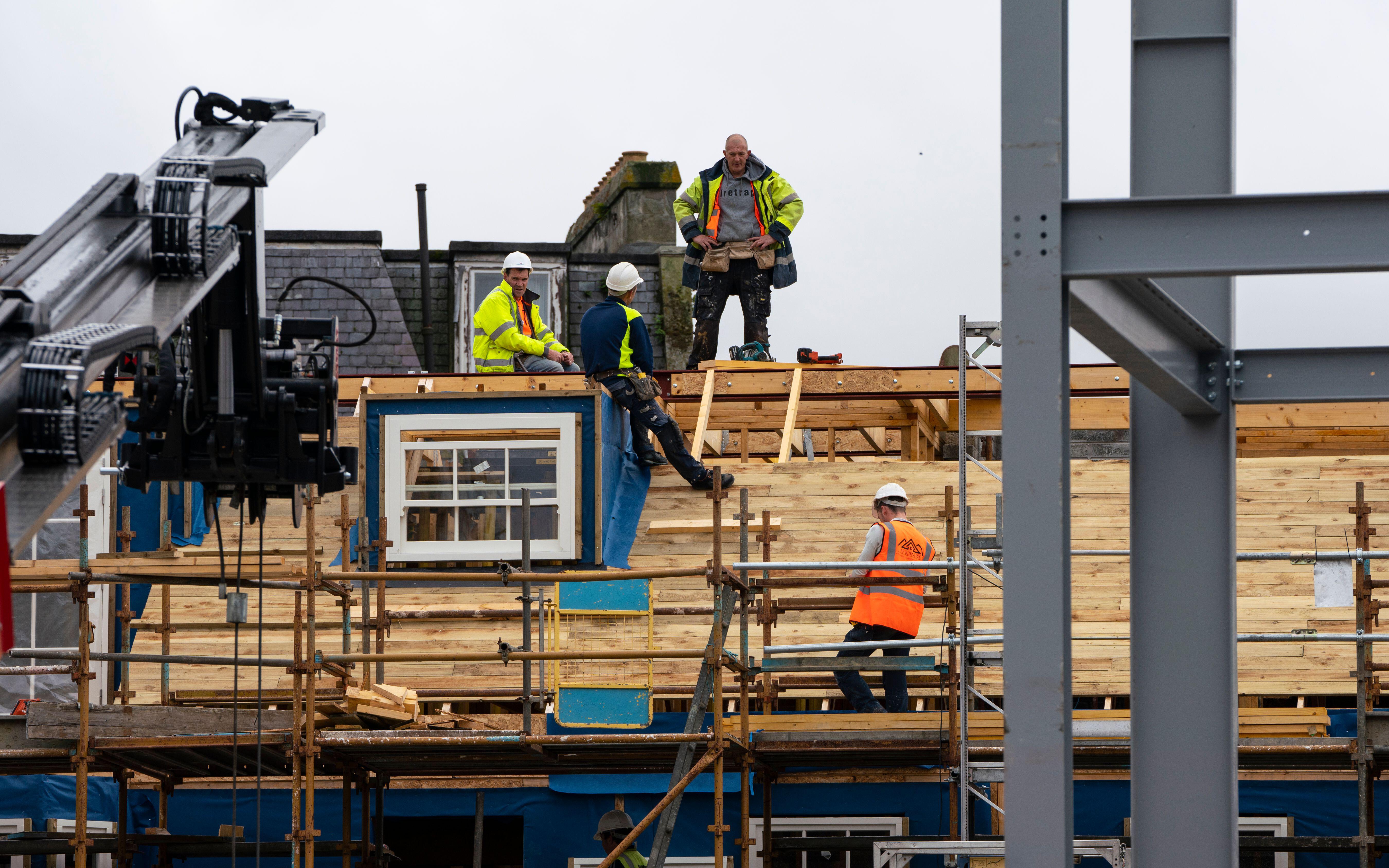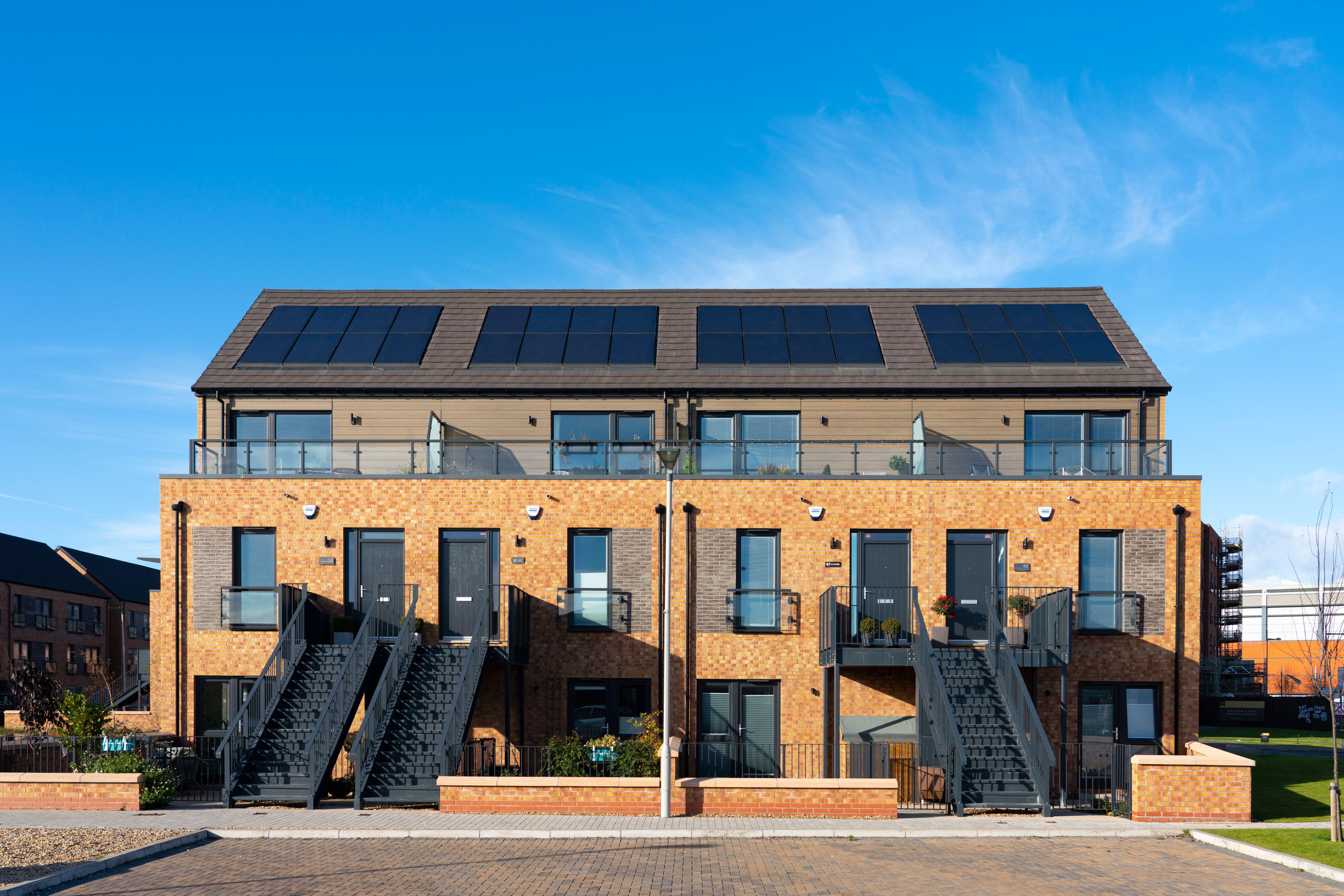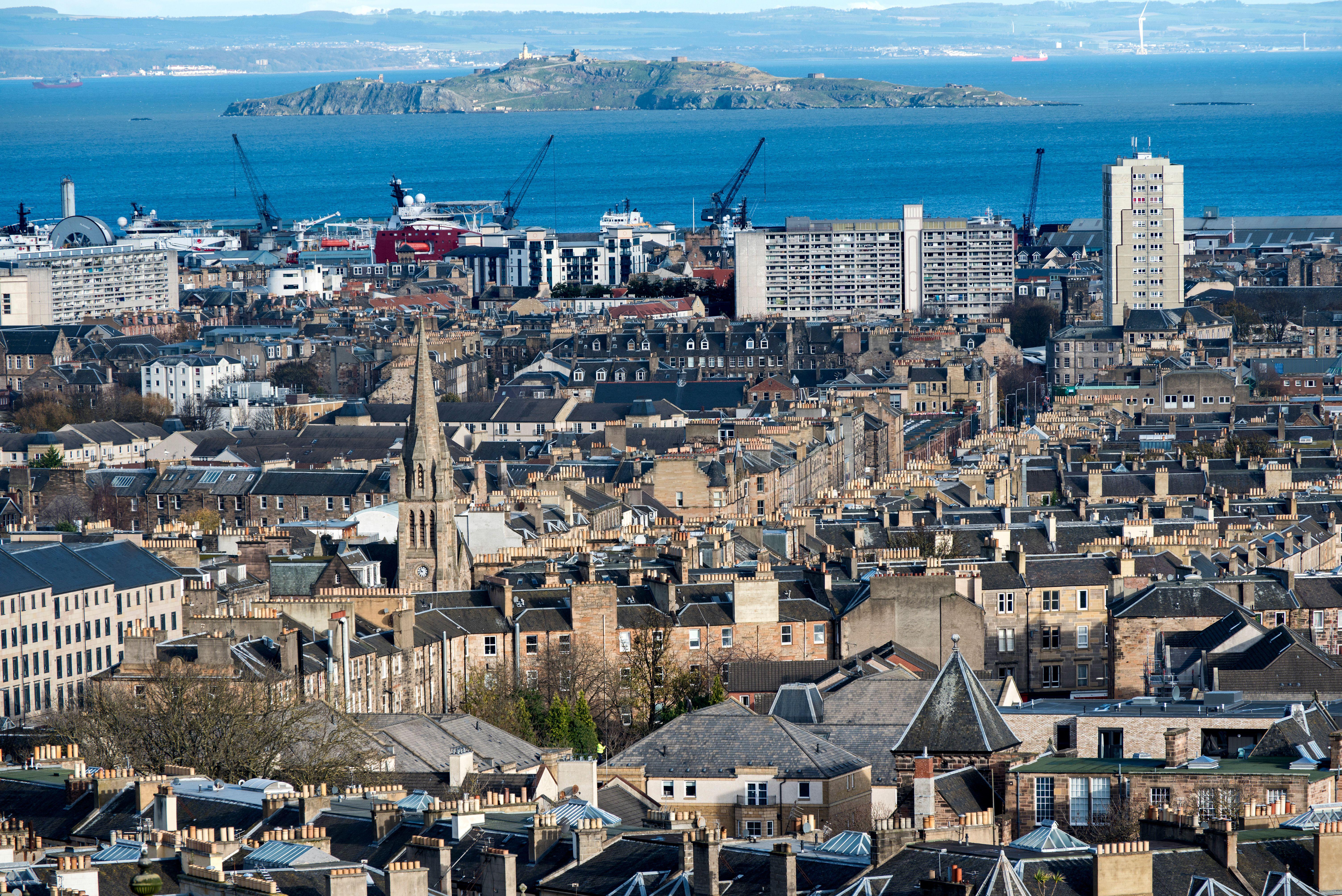Scotland's housing 'crisis': Building a way forward
Delivering his keynote speech at the SNP conference in Aberdeen, Humza Yousaf unveiled what he described as his party’s “most ambitious proposal yet”, telling delegates that “by the end of this parliament the SNP Government will, subject of course to due diligence and market testing, go directly to the international bond market for the first time in our own right”. The purpose of issuing the country’s first ever bond? “To fund vital infrastructure, like affordable housing projects”.
If successful, the move will see the Edinburgh administration raise funds on the capital markets by 2026. “This will bring Scotland to the attention of investors across the world,” Yousaf said, “and it will raise our profile as a place where investment returns can be made.”
Whether or not the bond issue can go ahead, and there is plenty of speculation about its limitations or indeed its viability, there is plenty of data to support the need for substantial investment in housing.
Scottish Government figures show homelessness has returned to pre-pandemic levels, with more than 39,000 applications for homelessness assistance made between 2022-23. The number of children in temporary accommodation rose too, reaching 9,595 in March.
Meanwhile, there are more than 240,000 people on the waiting list for social housing against an annual allocations number just north of 26,000 according to a July report by Solace Scotland, which represents council chief executives.
Its chair Cleland Sneddon said the paper revealed “the unsustainable pressure” on local authority provision, arguing that the pace of new completions is just too slow.

Builders at work in St Andrews. Image: Iain Masterton/Alamy
On the open market, the number of house sales has fallen by 10 per cent, year on year, according to figures for August from chartered surveyors Walker Fraser Steele, as higher interest rates have left many people unable to buy.
And in the private rental sector, average monthly payments have rocketed to almost £1,100 – up by 35.5 per cent in five years, according to a recent quarterly report by estate agents Citylets, and something widely linked to lack of availability in the market.
Local factors affecting supply, demand, property type, condition and pricing mean the issue is the very definition of a postcode lottery. But there are complaints in both urban and rural communities about problems over getting and keeping a decent place to stay and there is broad agreement across specialist charities that Scotland is now in a “housing emergency”. Indeed, that very term has been used by both Edinburgh’s Cyrenians and Shelter Scotland. The latter organisation has this month called on Yousaf to formally declare a housing emergency and commit to supplying 38,500 social homes through buying and building by 2026. No such declaration has been made, but the Scottish Government does have a target of delivering 110,000 affordable homes by 2032. At least seven in ten of these are to be available for social rent and one in ten for remote, rural and island communities.
It’s a commitment contained in Housing to 2040, the Scottish Government’s long-term strategy. Published in 2021, the strategy is a Scottish first and sets out a simple ambition: that everyone in the country should have access to a “warm, safe, affordable and energy-efficient home that meets their needs, in a community they feel part of and proud of”.
But as the cost-of-living crisis continues to squeeze public and household finances, it’s an ambition that is more difficult to achieve.
Analysis published last week by the Fraser of Allander Institute (FAI) found economic growth has been “faltering and pretty muted over 2023”, a situation said to be strongly linked to continued high interest rates and wider economic uncertainty. The forecast for the year has been revised downwards, with growth expected to almost flatline at 0.2 per cent in 2023, rising to just 0.7 per cent in 2024 and reaching only 1.2 per cent in 2025.
“Businesses are not feeling that conditions are great right now, with many delaying or cancelling investment,” FAI director Professor Mairi Spowage commented on the findings, which come before the Chancellor’s Autumn Statement on November 22 and the subsequent Scottish Budget on December 19. “The spending envelope remains tight,” cautioned Joao Sousa, deputy director of the institute.

Solar panels on housing in Leith, Edinburgh. Image: Iain Masterton/Alamy
Scottish ministers have set aside £3.5bn over this parliamentary term to support the delivery of the new housing promised, but even before the publication of FAI’s analysis there were calls for more support and guidance for housing providers if the Housing to 2040 vision is to be met. “Available funding no longer aligns with the development or modernisation needs of the public sector,” according to Lesley Anderson of the Scottish Procurement Alliance, arguing that most development funding “is not a true representation of the actual construction costs” faced by housing associations and registered social landlords.
A new housing bill is expected to be introduced before the end of this parliamentary year to deliver aspects of the strategy, including the New Deal for Tenants, which aims to improve accessibility, affordability and standards across the entire rented sector. Housing minister Paul McLennan has told Holyrood there is still “a bit to go through the process” on that legislation and the timing of its introduction remains unclear. However, given that more than 8,300 responses to the consultation were received, including 7,500 “campaign-type” submissions, interest around the bill’s publication is likely to be significant.
That’s not to say there is nothing happening now. October has seen Deputy First Minister Shona Robison champion the completion of more than 300 new affordable and energy-efficient homes at the Dunbeg estate, near Oban in Argyll and Bute, in a project supported with council and government funding. And the publication of the new Rural and Islands Housing Action Plan, which commits to bringing more empty homes back into use and providing more residences for key workers, as well as addressing supply chain and skills gaps, will help to “generate sustainable local economic growth and help rural and island communities to thrive,” McLennan said.
But the housing bill will contain measures applicable to the whole country, and there is substantial interest in what it will say about rents and rights. Setting new rules for social landlords on domestic abuse and the regulation of the housing workforce, it is also expected to include actions to provide stronger protections against homelessness and measures on the regulation of rents. As such, it will cover portfolio areas held by both McLennan and tenants’ rights minister Patrick Harvie of the Scottish Greens. It is Harvie who oversaw the temporary imposition of rent caps for the private sector under the Cost of Living (Tenant Protection) Act. Introduced in October last year, it has twice been extended and will now run through to March 2024 at the latest, pausing eviction enforcements by private landlords in most cases and limiting the annual rent increases they can levy to three per cent. However, the cap does not apply to new tenancy agreements, meaning many people on joint tenancies have had no protection from increases by their landlords.
Stories have emerged of people in flatshares facing hikes as high as 35 per cent when one of their flatmates decides to move on, ending their joint tenancy. Tenants’ union Living Rent reports that one group of renters is facing an increase of £1,000 per month and has hit out at “profit-seeking behaviour” from property agents and landlords. Meanwhile, the Scottish Association of Landlords has called the rent cap and evictions ban “unfair and discriminatory” and though Harvie has said the government will keep the measures under review “to make sure they are justified and proportionate based on the pressures both tenants and landlords are experiencing”, the organisation has yet to be won over by the approach.
Indeed, it is claimed that the rise of average monthly rents is a consequence of the rent cap, with landlords putting charges up between tenancies. Average charges are now above £1,080, according to recent data from estate agents Citylets – an 11.4 per cent year-on-year change. Costs for tenants now are 35.5 per cent higher than they were five years ago, it is claimed, and the firm said “many in the industry” had feared that “the new legislation would exacerbate” the “imbalance” in supply and demand. Adrian Sangster of Aberdein Considine, contributing to that report, said: “Scotland’s PRS [private renting sector] timebomb started ticking several years ago and despite many warnings, the Scottish Government appear happy to let it explode, with those they claim to be protecting suffering the most.”

There have been concerns raised also about pressures for buyers as a result of higher mortgage costs. In the latest House Price Index for Scotland by Walker Fraser Steele, house sales were found to be 10 per cent lower than in the year to August than over the same period last year. Average prices increased by 0.6 per cent, or £1,375, over the timeframe – the weakest annual growth rate recorded since close to the start of the pandemic in May 2020. “Rates need to continue in a downward trajectory to persuade buyers back to the market,” said the firm’s regional development director Scott Jack. And in August, the Royal Institute of Chartered Surveyors (RICS) found a pronounced deterioration in the house price outlook for the upcoming quarter, with most of its surveyors reporting a drop in the number of prospective buyers coming forward after 20 months of interest rate rises.
There was further evidence of the impact of the shifting economy on the housing sector this month when Midlothian Council paused its plans to build more than 180 ‘green’ council houses over costs. Designed to create energy-efficient residences to Passivhaus standards, the scheme would have been the largest of its kind in Scotland, with homes set to offer savings of up to 80 per cent on fuel bills. However, the council found each would cost up to £150,000 more to build than standard homes. A report found that 90 Passivhaus homes being built at Newbattle would each cost more than £340,000, compared to around £183,000 per unit for a standard development at Newtongrange.
A consultation on adopting a new “Scottish equivalent of the Passivhaus standard” for all newbuild housing is expected early next year. The UK Passivehaus Conference was held in Edinburgh this month, where Harvie said that “improving the energy performance of our new homes and buildings is essential to cut overall energy use and help end our reliance on fossil fuels, which exposes everyone to volatile prices”. The move “complements commitments already made in the Bute House Agreement” which brought the Greens into government, attendees heard. But in her funding warning this month, Anderson of the Scottish Procurement Association said the potential adoption of such a standard is “compounding” concerns among housing providers about the costs of building.
Solace has called for “whole-system transformation”, and a minimum 10-year plan from the Scottish Government to deliver this, easing pressures on social landlords and preventing homelessness. “The social sector needs to grow by at least 125,000 homes just to meet current demand. However, since 2022 just 18,583 affordable homes have been delivered and the supply of affordable housing has fallen 20 per cent in three years,” Sneddon said. Likewise, Gordon MacRae of Shelter Scotland has said there is “no mystery” about how to fix the “emergency” over housing. “We need more social housing and we need it now,” he said.
There is agreement across housing charities, sector specialists and the Scottish Government that more housing stock is not only desirable but urgently needed. But with a number of competing interests and priorities, not to mention economic realities, building consensus on how to get there will take concerted effort.
Holyrood Newsletters
Holyrood provides comprehensive coverage of Scottish politics, offering award-winning reporting and analysis: Subscribe